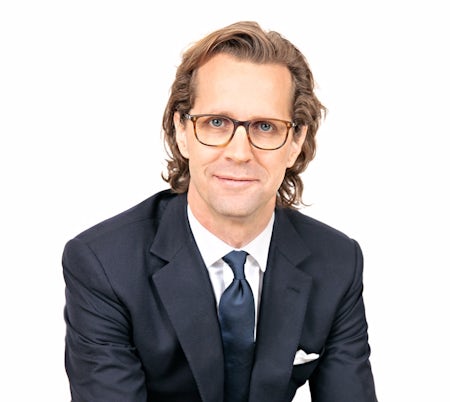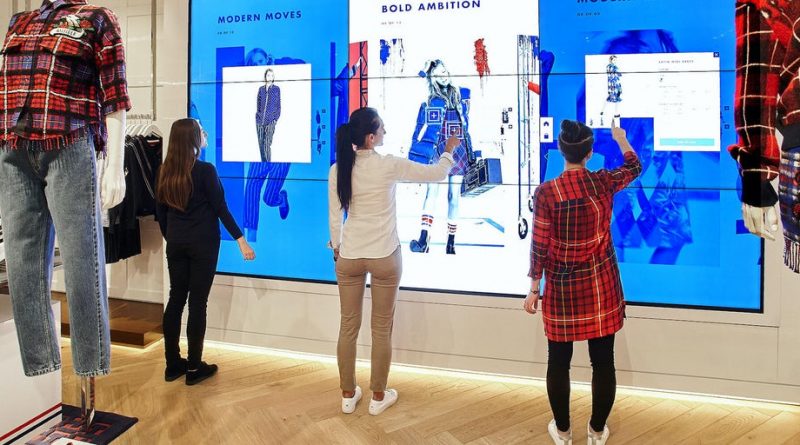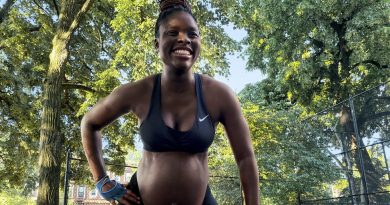How PVH Corp. Is Positioning Itself for Fashion’s New Normal | Sponsored Feature
NEW YORK, United States — Now a little more than a year into his role as PVH Corp.’s president, Stefan Larsson spent the first eight months travelling the world working side-by-side with Manny Chirico, CEO and chairman of the global apparel company, which owns Tommy Hilfiger, Calvin Klein and other brands.
That experience came to an abrupt end when the Covid-19 pandemic hit. For the last eight months, Larsson has navigated PVH through the immediate shockwaves of the pandemic on its operations and activities, and planned for the ensuing global recession by shoring up capital to reinforce its solid financial foundation and shepherd the company forward.
However, Larsson has also sought to respond to the greater demands from consumers that fashion companies embrace sustainability and take responsibility for the environmental and social impact of their operations.
Now, BoF sits down with PVH’s President Stefan Larsson to hear about his journey, preparing for his transition to the CEO role, his main focus areas moving forward and how he is preparing the company for the post-Covid dynamic shaping the industry, its workforce and consumers.

Stefan Larsson, President of PVH | Source: Courtesy
Where have you focused your time as President?
I joined the company as President in June last year — a role created as part of a wider succession plan towards my taking on the CEO position. I spent my first eight months working closely with Manny Chirico, our CEO and chairman, and learned the company through working side-by-side with him, travelling the world together, getting to know our brands, leaders and teams across our three major regions: North America, Europe and Asia.
As a leader, I’m focused on learning. I believe that the more you understand, the more of a positive impact you can have. Travelling with Manny was a great way to understand the strengths of PVH, and its journey especially over the last 15 years into one of the world’s biggest fashion groups.
When the pandemic hit — a crisis at an unprecedented magnitude — my role quickly pivoted to navigating the brands and regions through the crisis. Now, I’m leaning into the execution towards an accelerated recovery to set us up for success in the future.
What immediate steps did you take to support the business?
In the beginning, all the focus was on the safety and wellbeing of our consumers and our teams. Then, we turned to shoring up the liquidity needed to not only weather the storm, but also to make an accelerated recovery. We wanted to take the opportunity to position ourselves post-Covid — to win in the new normal.
It was helpful at the time to be a global corporation, as our three regions came into this crisis at different times. We were able to take the learnings from navigating through the pandemic in Asia and ready ourselves for it to hit in Europe and then later in North America.
We quickly turned toward bolstering e-commerce across owned and operated, as well as third-party, digital commerce. Next, we continued to focus on driving product relevance, and we also drove a more effective and interactive consumer engagement. As a result, in our second quarter, we grew total digital sales over 50 percent, including an 87 percent increase on our own sites.
How has the pandemic altered your long-term strategy?
The pandemic has made us rethink what’s important. To win in this industry going forward, you have to be more consumer-focused than any time before. You have to add real value to the consumer as a brand — in the product, in the experience, in your approach towards becoming more sustainable.
Covid-19 has supercharged existing underlying consumer and market trends. The move towards e-commerce, towards more essential products, towards casualisation and purpose-driven brands with real commitment to sustainability — all have been accentuated by the crisis.
Covid-19 has supercharged existing underlying consumer and market trends.
For us, as a growth platform for brands, we have to focus on what’s core to us. What are the most essential strengths we have? Our work now is to be obsessively focused on what’s really important for our consumer and connecting our core strengths to where the consumer is going. That’s what I view as an exciting opportunity coming out the other side of Covid-19.
What challenges do you anticipate?
I choose to see challenges as opportunities and, going forward, increased transparency is needed. You cannot define winning by financial performance alone. You must begin by winning the consumer, who is as concerned right now about how we do business as much as what we are selling. This is where the Forward Fashion component of our business comes in. We have three pillars in our Forward Fashion corporate responsibility plan: to reduce the company’s negative impacts to zero, increase positive impacts to 100 percent, and improve the lives of the 1 million+ people across our value chain. Throughout the pandemic, this has become even more core to the business strategy.
I believe in clarity in terms of vision; clarity in terms of strategic objectives. The power of compounded learnings is just incredible and in a company of 40,000 team members, you really tap into the power of scale — you’re able to move the needle. We are working with other companies in the industry and other forums to amplify our work to have as much of a positive impact as we can.
How does the Forward Fashion corporate responsibility strategy connect to future commercial activities?
At PVH, we have a longstanding commitment to corporate responsibility. As a leader of a Fortune 500 company, the biggest challenge and the biggest opportunity is to be clear and focused, set real objectives and then measure them and drive continuous improvement.
We wanted to take the opportunity to position ourselves post-Covid — to win in the new normal.
We’ll be focusing on core products that are essential to the consumer’s wardrobe. When you make sure that every single product has intent, you cut out a lot of redundancy and waste in the system. That’s good for the consumer, good for the business and it’s good for the environment.
To me, driving fashion forward for good is part of the reason why we are in business. As one of the biggest global fashion groups in the world, we have a unique opportunity to build on the strength of our two global iconic brands: Calvin Klein and Tommy Hilfiger. Our global presence and consumer base, and the strength of a committed global team, will allow us to drive profitable sales growth and shareholder returns, and do it in a way that has a positive impact.
How do you believe the fashion industry at large will evolve into our “new normal”?
There is nothing like a real, unprecedented crisis to help you prioritise what’s really important and what creates value. I’m optimistic that, in a world where the consumer is in charge, the fashion industry and the big companies within it will be driven to utilise our economy of scale and brand awareness as a force for good.
The challenges and experiences of Covid-19 are a catalyst to get closer to the consumer. To win, sustain and add value to them, you have to be more focused on what that takes. Whether you’re an executive, a team member or a consumer, we’re all driven by what now feels important and meaningful. That’s why I’m passionate about the Power of PVH and our ability to continue to grow as a global brand platform, drive profitable sales growth, have a positive impact and drive fashion forward — for good.
This is a sponsored feature paid for by PVH as part of a BoF partnership.
Related Articles


